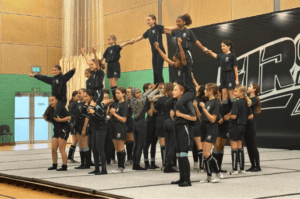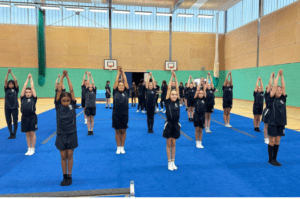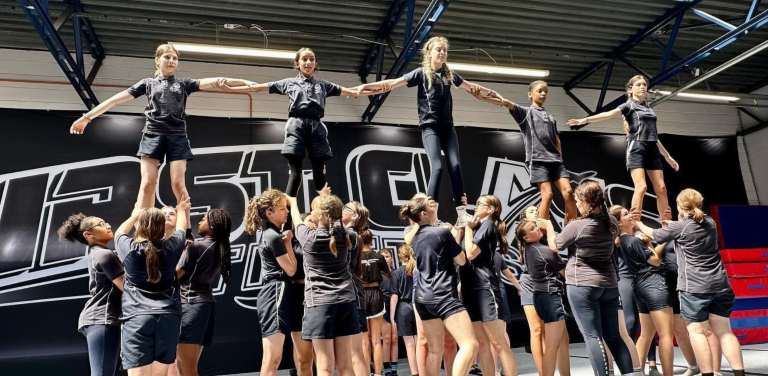OSF Case Study
Introduction
The Opening School Facilities (OSF) Fund aims to create sustainable positive changes to the physical activity levels of target community populations; particularly those who experience health and social inequalities which could be alleviated through sustained participation in physical activity. It does this by facilitating the opening of schools for the provision of additional PE and extra-curricular sport and physical activity. Funded by the Department of Education, the OSF initiative is part of Sport England’s ‘Uniting the Movement’ strategy. It contributes to Sport England’s goals to tackle inequalities in physical activity by listening and responding to new audiences, supporting innovation and new ways of working, particularly working collaboratively with communities to co-evaluate new initiatives.
This case study reports The Radcliffe School in Milton Keynes, England, South-Eastern Region. The report is the result of a collaborative review and evaluation involving teachers, coaches and participants. Our aim is to celebrate success and to identify learning from the project which can be embedded in future projects.
Radcliffe is a secondary school in Wolverton, Milton Keynes, at the centre of a vibrant and diverse community.
According to the IDAOPI (Income Deprivation Affecting Older People Index), 6 out of 9 estates served by the Radcliffe School are in the bottom 30% deprivation index with five in the lowest income band in Milton Keynes. On average, 33% of the students within The Radcliffe are identified as Pupil Premium, with 35% having received Free School Meals (FSM) at any point during their school life. 21% students are identified as English as an Additional Language (EAL) with 29 first languages within the school. Mobility rates have declined within The Radcliffe School to 2% in 2017/18 compared to 4% nationally.
What the project set out to achieve
The Radcliffe School wished to establish a cheerleading club, staffed by qualified coaches. Its aim was to develop positive mood and self confidence, improve physical endurance and flexibility and foster teamwork and resilience. The core values were based upon all participants growing to be the best versions of themselves: improving their self esteem, positive mindset and self regulation to give them strategies to manage their mental health and well being. In Year 1 the club started as an afterschool club, but evolve in Years 2 and 3 into a financially sustainable community outreach project.
What the project achieved
Roxy, a qualified cheerleading coach from First Class Athletics and PE teacher Lauren lead after school sessions for year 7 to year 10 students. 42/43 students normally attend. On the day Leap attended, several students left for a school football competition and then came back to cheerleading!


The students enjoyed socialising and the challenges of mastering and becoming competent at the movements. Those with less experience or ability were included in adapted movements to ensure the session were truly inclusive.
The teachers were very proud to show us the cheerleading after school club and how engaging it was to so many to their female students. They were thrilled to be able to offer it to so many students, freely.
Comments from the students include:
“I love that you don’t need to have skills to do it. It makes me more confident “
“It’s always a happy environment. I’ve learnt loads of stuff”
“1. I love being part of a team. 2. I love that it’s inclusive to all 3. I love the activities we do”
They identified many different ways it improved their health and wellbeing:
“It’s made me think that it’s not just a club but we r like a family now”
“I have enjoyed being more active and have gone outside more”
“It has made me feel a lot more active and it has boosted my confidence and mind”
Reflection and application of learning
Lauren felt that the reason for the cheerleading club success in attracting and retaining so many students was by employing two specialist coaches. Two coaches mean that where students require further support to perform skills, there was always a coach on hand to help them.
The school serves a community of high deprivation and keeping the sessions free was crucial to

When they were asked what were the most important things to consider when designing a session for young people, their answers included:
“Including everyone 👋”
“Don’t make it too complicated but make it fun. Always have a beat to something so they are entertained and not make it boring.”
“Make sure obesity is not an issue”
What next?
In the future The Radcliffe School would like to set up a cheerleading club: some students have joined local clubs but the cost prevents others from doing this.
The school will continue to fund specialist coaches, and Lauren will coach beginners to enable all students to receive appropriate support.
Anything else?
“Meeting Rhiannon and working in partnership with her has been life changing for our students as they are now able to access activities that they previously would never have been able to, and many have now developed a passion that their families are finding ways for them to be able to join community clubs and pursue their interests and talents further.”
Contact rhsmith@leapwithus.org.uk if you wish to link with the schools involved with Opening Schools Facilities or would like to know more about best practice when opening your school facilities.





